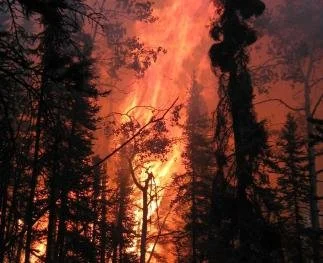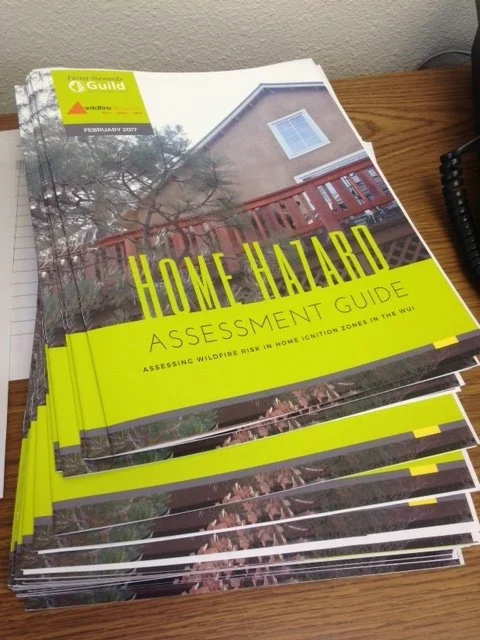Happy Wednesday FAC NM community!
With at least 10 active wildfires burning across the state and more than 20,250 wildfire ignitions that have sparked across the country since the start of 2022, we wanted to remind everyone about emergency preparedness while taking some time to discuss the future of wildfires in the Southwest. Both personal and statewide wildfire readiness are an ongoing process, and both may be influenced by our evolving understanding of fire behavior and climate science.
This week’s Wildfire Wednesday features information on:
Reviewing steps for personal wildfire preparedness
The current state and future of Wildfire in the West
Upcoming events and webinars
Best regards,
Rachel
Steps for personal wildfire preparedness
Where to start
Wildfire readiness can be categorized into three stages:
1) Getting your space ready for and resilient against wildfire ahead of time
2) Getting yourself and your family set for safety in the event of a wildfire
3) Getting away from the active wildfire by following the RSG evacuation guide
So where is the best place to start? The Ready, Set, Go! Fire Action Guide empowers residents living in the wildland urban interface with the knowledge they need to be better prepared for responding to a wildfire in their community. Each step of the program addresses wildfire preparedness at each of the stages mentioned above.
Using the Ready, Set, Go! resource, residents can read about actionable steps to protect their homes, learn about the Wildland Urban Interface (WUI) and how this impacts fire risk, and follow checklists for how to prepare their family ahead of time, get ready to evacuate as the fire approaches, and ensure they leave early. Individuals interested in learning more can find the latest news and initiatives through the national Ready, Set, Go! website.
Ready when wildfire approaches
As we all gear up for a very active wildfire season across the Southwest, you can use Living with Fire’s Evacuation Checklist to mentally refresh on what should be in your to-go bag, how to prepare family, pets, and your vehicle for an evacuation, and learn what to do inside and outside of your home to provide the best chance for structure survival.
Resources for keeping up to date
Air Quality: the national AirNow Fire and Smoke Map allows you to view known wildfire incident information, locate satellite-detected fire activity, navigate to real-time air quality reports from various monitoring equipment, and generate reports on the fire activity, air quality, or smoke plumes in any location by providing your geolocation. You can also visit the website or sign up to receive air quality text alerts from the National Weather Service.
Active Wildfires: visit InciWeb’s interactive wildfire map to view wildfire locations and to review incident information; keep up to date with wildfire incident and evacuation information through NM Fire Info.
Automatic Alerts: download the CodeRed Mobile Alert App to receive emergency alert notifications directly to your mobile device whether at home, on the road, or traveling around the country. These mobile push notifications deliver relevant GPS location-based alerts to ensure you receive critical information when you are in CodeRED jurisdiction.
Emergency notifications, including wildfire evacuation notices, are also broadcast over radio and television though the Emergency Alert System. Find your local CPB radio station and be prepared to listen for emergency alerts, even if the power goes out.
Wildfire in the West: current state and the future
An early start to fire season
“Fire season in New Mexico arrived early and aggressively in 2022, fueled by strong, gusty winds, extremely low humidity, and an exceedingly dry landscape. As of April 19, nearly 99 percent of the state was dealing with some level of drought” according to an April 26 NASA Earth Observatory article. Scientists have recently determined that annual acreage burned by wildfires in the western United States has doubled in the last two decades, an increase they attribute to a climate change-driven intensification of how hot and dry the atmosphere gets. This heating and drying makes “vegetation more susceptible to burning and the atmosphere more conducive to sustaining fire.”
Climate change leads to wildfire uncertainty
One aspect of climate change is certain: the uncertainty it will create. Such is the case for wind, a major driver in the unseasonable intensity and spread we have seen in April’s large wildfires across the state. Recent research out of Columbia University has shown that as the climate warms, the westerly winds and other major global air currents may shift trajectory. “The movement of these winds have huge implications for storm systems and precipitation patterns. And while this research does not indicate exactly where it will rain more or less, it confirms that [this shift in trajectory will cause] wind and precipitation patterns [to] change”.
So how else might fire conditions change in the future? According to a 2015 working paper titled Climate Change and Fire in the Southwest, “there are three pathways through which fire activity might be influenced by climate change: changes in fuel condition (fuel moisture), changes in fuel loading, and changes in ignitions.” While it is more challenging to predict the impact climate change will have on how wet or dry the state is, researchers generally agree that the southwest will see less winter snow and more summer rain.
As temperatures increase, heat waves become more common, and water availability for plants and trees becomes less predictable, large wildfires like the ones burning right now will likely become more common and more severe.
Learn more about what influences wildland fire behavior.
Learn more about wildfire trends, causes and risk factors, and effects in the western U.S.
Upcoming opportunities
Webinars
May 4, 6:00 - 7:00pm MDT
Home Hazard Risk Assessments - Community-based Wildfire Risk Reduction
May 5, 10:00 - 11:30am MDT
Too Much, Too Little or Just Right? Forest regen in fire-adapted landscapes (SWERI/USDA)May 10, 12:00 - 1:00pm MDT
Outdoor Recreation & Anthropogenic Wildfire - a San Juan NF case study (SWFSC)May 18, 6:00 - 7:00pm MDT
Potential Operational Delineations (PODs) - Pre-planning for fire operations and response



















